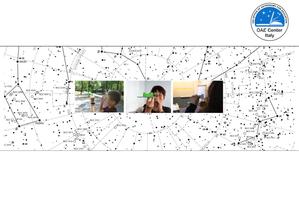Glossary term: Diâmetro angular
Description: O diâmetro angular de um objeto é seu diâmetro visível a partir de um local específico, medido como um ângulo. O diâmetro angular é usado na astronomia como uma forma de expressar o tamanho dos objetos celestes no céu. O diâmetro angular aumenta com o aumento do tamanho físico de um objeto e diminui quando o objeto está mais distante. Por exemplo, a Lua e o Sol têm diâmetros angulares de cerca de meio grau quando vistos da Terra. A Lua é cerca de 400 vezes menor que o Sol, mas parece ter o mesmo tamanho (cerca de meio grau de diâmetro), pois o Sol está cerca de 400 vezes mais distante.
See this term in other languagesTerm and definition status: The original definition of this term in English have been approved by a research astronomer and a teacher The translation of this term and its definition is still awaiting approval
The OAE Multilingual Glossary is a project of the IAU Office of Astronomy for Education (OAE) in collaboration with the IAU Office of Astronomy Outreach (OAO). The terms and definitions were chosen, written and reviewed by a collective effort from the OAE, the OAE Centers and Nodes, the OAE National Astronomy Education Coordinators (NAECs) and other volunteers. You can find a full list of credits here. All glossary terms and their definitions are released under a Creative Commons CC BY-4.0 license and should be credited to "IAU OAE".
If you notice a factual or translation error in this glossary term or definition then please get in touch.
Related Activities
The sky at your fingertips
astroEDU educational activity (links to astroEDU website) Description: Build a simple cross-staff and measure the stars!
License: CC-BY-4.0 Creative Commons Attribution 4.0 International (CC BY 4.0) icons
Age Ranges:
10-12
, 12-14
Education Level:
Middle School
, Primary
Areas of Learning:
Informal/Field Trip Related
, Observation based
, Project-based learning
Costs:
Low Cost
Duration:
2 hours
Skills:
Analysing and interpreting data
, Developing and using models









